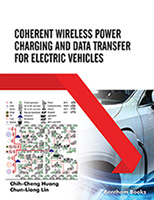Abstract
SHS investigation development is considered from the geographical and historical viewpoint. 3 stages are described. Within Stage 1 the work was carried out in the Department of the Institute of Chemical Physics in Chernogolovka where the scientific discovery had been made. At Stage 2 the interest to SHS arose in different cities and towns of the former USSR. Within Stage 3 SHS entered the international scene. Now SHS processes and products are being studied in more than 50 countries.
Abstract
Keywords:
Compensation network, Electric vehicle (EV) battery charging, Highfrequency switching components, Inductive power transfer, Magnetic resonance coupling.
Recommended Chapters
We recommend

Authors:Bentham Science Books






